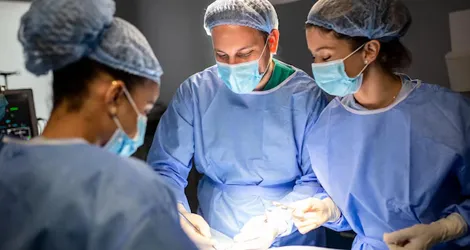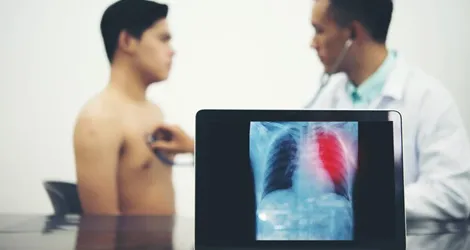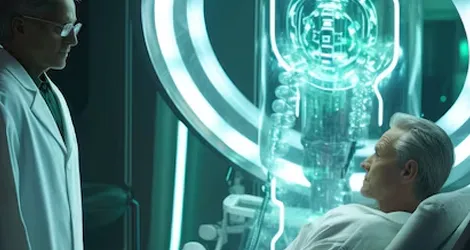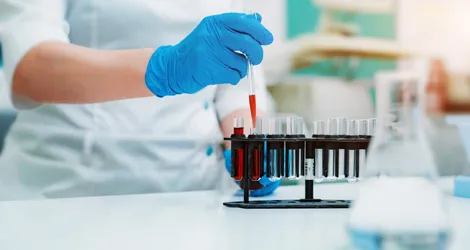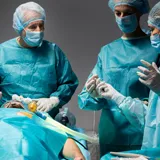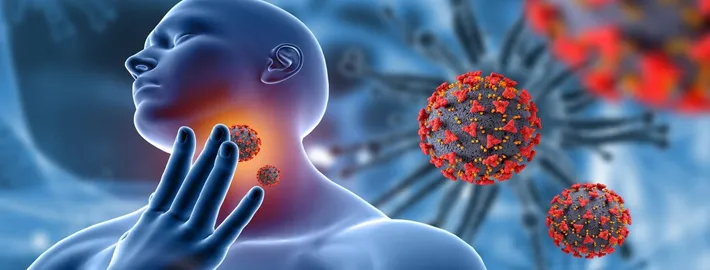Overview
Carcinoid Cancer is a rare type of cancer that starts in the neuroendocrine system, which helps control hormone levels in the body. This cancer often forms in the bowels or appendix, but it can also appear in the stomach, pancreas, lungs, breasts, kidneys, ovaries, or testicles. It usually grows slowly.

What is Carcinoid Cancer?
Cancer begins when cells change and start growing in an uncontrolled way. These abnormal cells can form a lump, also called a tumor. Cancer cells might also spread into nearby tissues or travel to other parts of the body. This spread is known as metastasis.
Carcinoid tumors, also called neuroendocrine tumors, are a rare type of cancer that usually grows slowly. They often don’t cause symptoms, so a person might have one for years without knowing. These tumors can develop anywhere in the body that has hormone-producing (neuroendocrine) cells, but they’re most often found in the digestive tract, where these cells are more common.
Types of Carcinoid Cancer
Carcinoid tumors are a type of slow-growing cancer that often begins in the hormone-producing cells of the body. They can form in different parts of the body, but they are most commonly found in the digestive tract and lungs. Each tumor is named based on where it starts. Here's a look at the common areas where these tumors may grow.
Small Intestine:
Carcinoid tumors in the small intestine are some of the most common. They often grow slowly and may not cause symptoms right away. When symptoms appear, they can include belly pain, cramping, or changes in bowel habits. These tumors sometimes produce hormones that cause flushing or diarrhea.Appendix:
Many carcinoid tumors start in the appendix, especially in people who have their appendix removed for other reasons. These tumors are often found by accident during surgery. Most appendix carcinoid tumors are small and don’t spread, so they’re often cured with surgery alone.Rectum:
Carcinoid tumors in the rectum are usually found during routine screening tests like colonoscopies. They tend to grow slowly and may not cause symptoms at first. When symptoms do appear, they might include rectal bleeding, pain, or changes in bowel habits.Lungs:
Carcinoid tumors in the lungs can affect breathing. Some people have a cough, wheezing, or chest pain. Others might cough up blood or have recurring lung infections. Lung carcinoids can be typical (slow-growing) or atypical (faster-growing), and treatment depends on the type and stage.Colon:
Carcinoid tumors in the colon are less common but can still be serious. They may not cause symptoms until they’ve grown large or spread. Signs can include belly pain, weight loss, or blood in the stool. These tumors are often found later than those in other areas.Stomach:
Carcinoid tumors in the stomach often grow in people with certain long-term stomach problems, such as high stomach acid or chronic inflammation. These tumors may cause pain, nausea, or indigestion, but small ones might not cause any symptoms at all.Pancreas:
When carcinoid tumors form in the pancreas, they are often called pancreatic neuroendocrine tumors. They may produce hormones that lead to symptoms like low blood sugar, stomach ulcers, or severe diarrhea. Some may not cause symptoms and are found during imaging tests for other reasons.Liver:
The liver is usually not where carcinoid tumors start, but tumors from other places like the intestine or pancreas can spread there. When they do, they may cause pain, weight loss, or hormone-related symptoms like flushing and diarrhea. Treatment often focuses on controlling symptoms and slowing the tumor’s growth.





